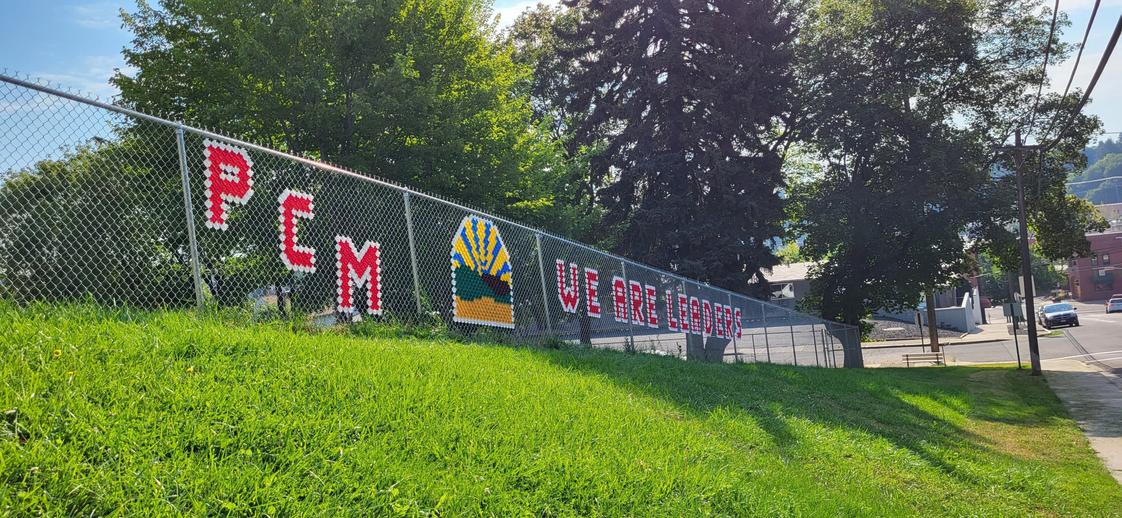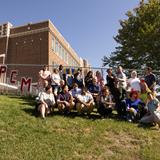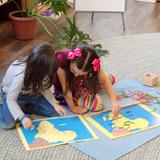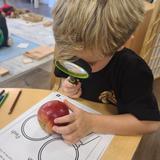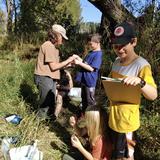Serving 118 students in grades Kindergarten-9, Pullman Community Montessori ranks in the bottom 50% of all schools in Washington for overall test scores (math proficiency is bottom 50%, and reading proficiency is bottom 50%).
The percentage of students achieving proficiency in math is 21-39% (which is lower than the Washington state average of 41%). The percentage of students achieving proficiency in reading/language arts is 21-39% (which is lower than the Washington state average of 53%).
The student-teacher ratio of 20:1 is higher than the Washington state level of 16:1.
Minority enrollment is 32% of the student body (majority Hispanic), which is lower than the Washington state average of 52% (majority Hispanic).
Quick Facts (2025-26)
- School Type: Charter School
- Grades: Kindergarten-9
- Enrollment: 118 students
- Student-Teacher Ratio: 20:1
- Minority Enrollment: 32%
- Overall Testing Rank: Bottom 50% in WA
- Math Proficiency: 21-39% (Btm 50%)
- Reading Proficiency: 21-39% (Btm 50%)
- Source: National Center for Education Statistics (NCES), WA Dept. of Education
Top Rankings
Pullman Community Montessori ranks among the top 20% of public schools in Washington for:
Category
Attribute
Student Attention
School Overview
Pullman Community Montessori's student population of 118 students has grown by 49% over five school years.
The teacher population of 6 teachers has grown by 20% over five school years.
School Type
Grades Offered
Grades Kindergarten-9
Total Students
118 students
Gender %
Total Classroom Teachers
6 teachers
School Rankings
Pullman Community Montessori ranks within the bottom 50% of all 2,088 schools in Washington (based off of combined math and reading proficiency testing data).
The diversity score of Pullman Community Montessori is 0.49, which is less than the diversity score at state average of 0.69. The school's diversity has stayed relatively flat over five school years.
Overall Testing Rank
#1728 out of 2088 schools
(Bottom 50%)
(Bottom 50%)
Math Test Scores (% Proficient)
21-39%
41%
Reading/Language Arts Test Scores (% Proficient)
21-39%
53%
Student-Teacher Ratio
20:1
16:1
American Indian
n/a
1%
Asian
n/a
9%
Hispanic
19%
26%
Black
1%
5%
White
68%
48%
Hawaiian
n/a
2%
Two or more races
12%
9%
All Ethnic Groups
Eligible for Free Lunch
40%
49%
Eligible for Reduced Lunch
6%
8%
School Statewide Testing
School District Name
Source: National Center for Education Statistics (NCES), WA Dept. of Education
School Notes
We believe ALL students deserve the opportunity to
have the education that works best for them! PCM's K-9th grade
program offers whole-child education personalized to students'
needs that prepares them, through rigorous academics, a robust
social emotional program, and career and life skill
development.
WHY CHOOSE PCM?
All Grade Levels
KEY FEATURES
Developmentally appropriate age grouping
Stand-alone Kindergarten
Younger Elementary 6-9 yr olds
Older Elementary 9-12 yr olds
Adolescent Community 12-15 yr olds
SERVICES WE PROVIDE
WHY CHOOSE PCM?
All Grade Levels
- Stand-alone K & mixed-age community environment for 1st-9th
- Personalized instruction incorporating student choice
- 2 core blocks of worktime to build focus and provide opportunities for authentic practice
- Social-emotional, leadership, and life skills development
- Dually-certified Montessori teachers, accompanied by trained classroom instructional assistants
- Visually stimulating, hands-on Montessori learning materials
- Place-based curriculum grounded by Montessori best practices
- Authentic project-based learning to reinforce core skills
- Employability skill development
KEY FEATURES
Developmentally appropriate age grouping
Stand-alone Kindergarten
Younger Elementary 6-9 yr olds
Older Elementary 9-12 yr olds
Adolescent Community 12-15 yr olds
SERVICES WE PROVIDE
- SPED, 504, ELL, HiCap, child find, early intervention/multitiered systems of support
- Almost all support services are provided in the classroom
- On-location extended care programming
- Student transportation
- Breakfast, lunch, and snacks
Profile last updated: 02/09/2025
Frequently Asked Questions
What is Pullman Community Montessori's ranking?
Pullman Community Montessori is ranked #1728 out of 2,088 schools, which ranks it among the bottom 50% of public schools in Washington.
What percent of students have achieved state testing proficiency in math and reading?
21-39% of students have achieved math proficiency (compared to the 41% WA state average), while 21-39% of students have achieved reading proficiency (compared to the 53% WA state average).
How many students attend Pullman Community Montessori?
118 students attend Pullman Community Montessori.
What is the racial composition of the student body?
68% of Pullman Community Montessori students are White, 19% of students are Hispanic, 12% of students are Two or more races, and 1% of students are Black.
What is the student-teacher ratio of Pullman Community Montessori?
Pullman Community Montessori has a student ration of 20:1, which is higher than the Washington state average of 16:1.
What grades does Pullman Community Montessori offer ?
Pullman Community Montessori offers enrollment in grades Kindergarten-9
What school district is Pullman Community Montessori part of?
Pullman Community Montessori is part of Pullman Community Montessori School District.
School Reviews
Review Pullman Community Montessori. Reviews should be a few sentences in length. Please include any comments on:
- Quality of academic programs, teachers, and facilities
- Availability of music, art, sports and other extracurricular activities
Recent Articles

How Public Schools Support Students on Free / Reduced-Lunch Programs
Explore how U.S. public schools support students eligible for free or reduced-price lunch through nutrition, academic, and wraparound services in 2025.

Hidden Costs of Public Schools: Fees, Supplies & Extras
Explore the hidden costs in public schools鈥攆ees, supplies, extracurriculars鈥攁nd how parents can plan for them in 2025.

Public School Funding 2025: What Families Should Know
Essential insights on public school funding in 2025鈥攈ow it works, what鈥檚 changing, and what families should know to stay ahead.


